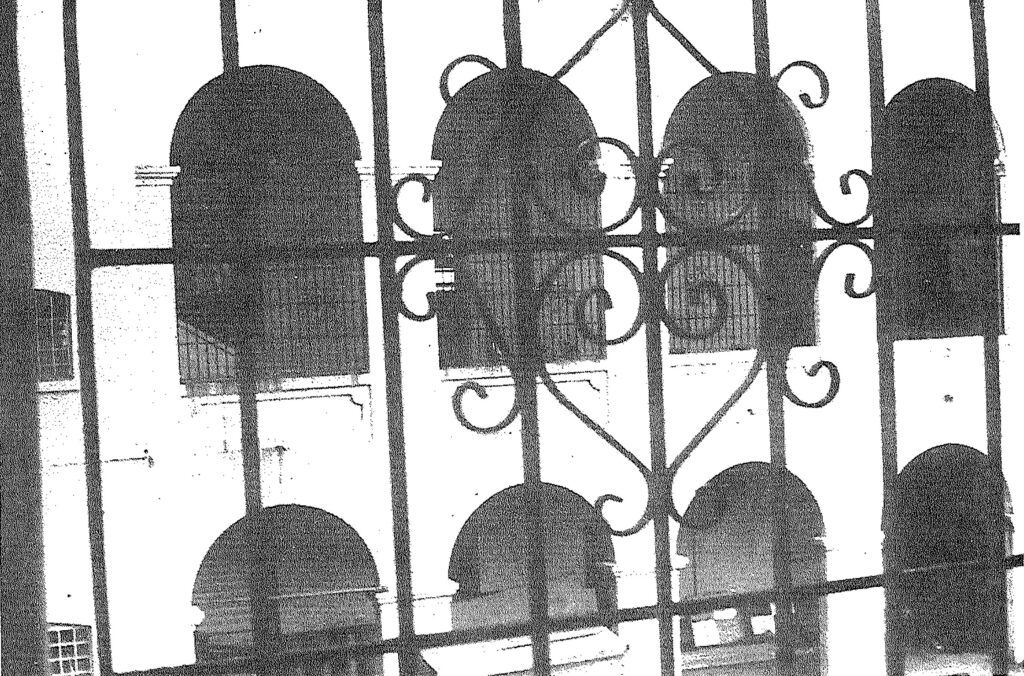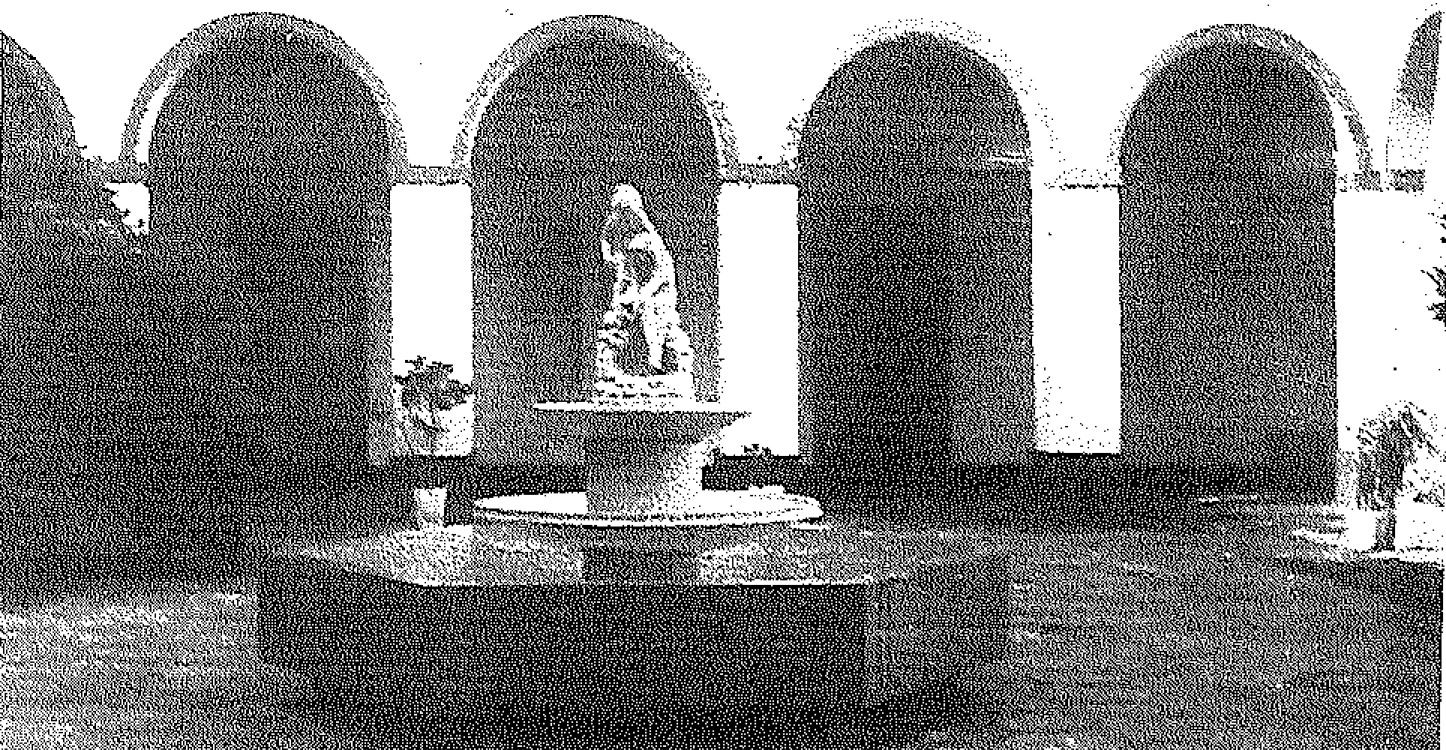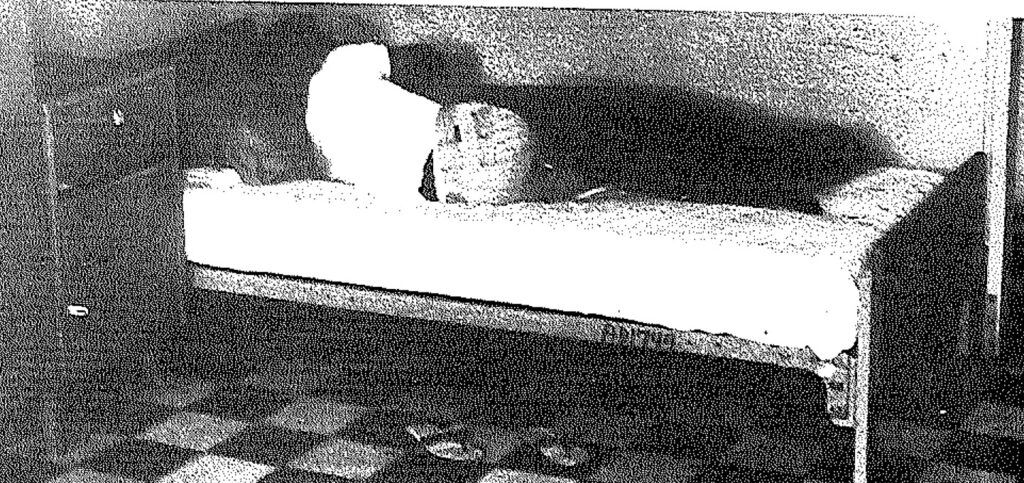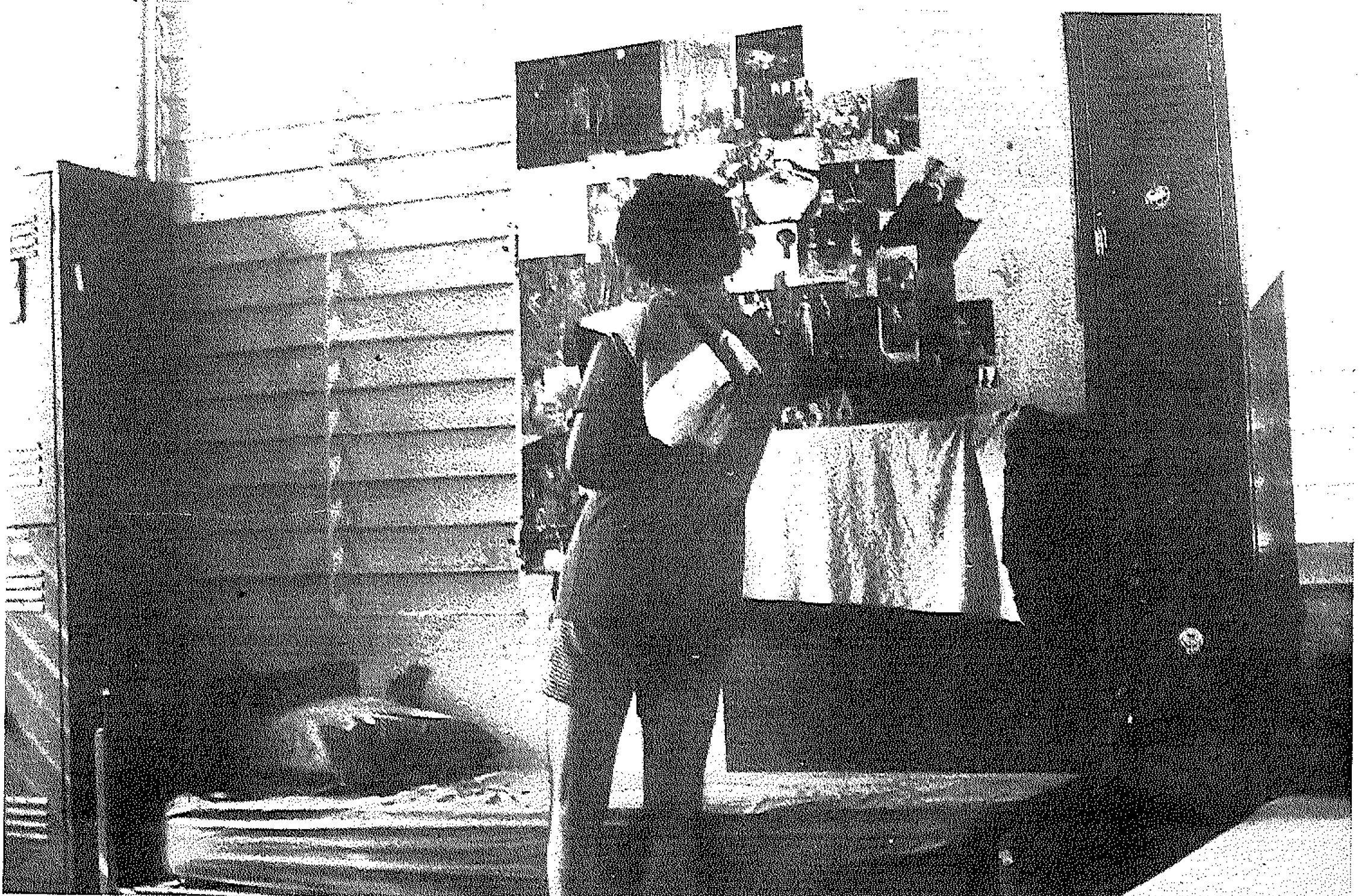Puerto Rico has an enormous drug addiction problem. A few years ago its government was so concerned that it set up a special drug prevention department. In the second of two articles on the island, Mark Allen explores the problem and shows where initiatives have been successful
THE YOUNG MAN in the tailor shop runs his fingers over a piece of cloth, examines it thoughtfully and says, without looking up. “Can I finish this off while we talk? You see, man, I want to be a tailor.”
Edwin Montalvo is small, lean and dark and his speech is peppered with Americanese, There is more than a touch of irony in what he is saying. He is a convicted murderer with a long history of drug abuse. He represents, however, a brave new drive that is taking place in Puerto Rico in the prevention and treatment of drug addiction. Edwin, aged 24, is one of 125 addicts, nearly half of them former prison inmates, in a residential treatment centre in Santurce, near San Juan, one of three such therapeutic communities on the island.
A few years ago drug addiction was a rapidly spreading cancer, threatening to destroy Puerto Rican society. A United Nations report revealed that San Juan, the island’s capital, was second only to New York in the number of drug users per head of – population. According to different estimates, there were between 75,000 and 100,000 people dependent on drugs. The junkie, a pitiful but despised creature, was unbiquitous. Polls showed that over 50 per cent believed drug addiction was the country’s most serious problem.

The position became so bad that the ruling Popular Democratic. Party made drug addiction an election issue and in July, 1973, a separate addiction prevention department was set up. That the spread of drug addiction has been contained and the increase in opiate usage put into reverse is due, to a large extent, to the positive initiatives that have been taken since then. Today, there are somewhere in the region of 60,000 addicts of whom 10,000 are receiving treatment.
Although the number of people being treated is still a comparatively small proportion of the whole drug population it represents a considerable improvement. There are now four times more treatment facilities available than there were in 1972. The way the drug problem is being tackled is reflected in the polls. The most recent ones showed that drug addiction had gone from first to fifth place in Puerto Rico’s ‘‘pressing problems’ league. Now only 14 percent of the population believe it is the number one problem.
The addiction prevention department — its official: title is the departmento de servicios conira la adiccion — altogether employs 2,500 people, 300 in its head office in Rio Piedras. It is one of 14 departments of the executive with its head, Rafael Santos del Valle, reporting directly to the governor. The department is now doing work previously undertaken by six separate agencies and is responsible for the treatment and prevention of drug and alcohol addiction. It also has licensing and control functions and has legal and research sections.
Its fight against addiction is universal. Scattered throughout the-island are centres to which the addict can be referred. Every addict is then transferred to one central medical centre, at the hospital in Rio Pedras, which offers a 24-hour service. Then follows a process of detoxification, evaluation, diagnosis and prognosis, lasting up to a month, after which a treatment programme is worked out with the addict. The addict is then sent to one of the 58 treatment centres on the island.
Three treatment methods are used — drug free (coming off drugs entirely, methadone (an opiate substitute) and polydrug (alternating drugs at frequent intervals). The polydrug treatment method is the newest and most experimental approach, used mainly for young people. However, since it was introduced in Puerto Rico two years ago, it has proved less successful than the other two methods. Methadone is reserved for addicts who are over 18, who have been using hard drugs for over two years and who have failed at least once in a drug-free treatment programme. An addict will be stabilised on methadone and then gradually weaned off the drug, the aim being to make him totally drug free within two years.
Although the first battle, against the heroin ”epidemic” which reached its heights in the late 1960s has been won, thanks to the efforts of the addiction prevention department, backed up by some remarkable successes the police have scored against drug trafficking, the war is by no means over. Patterns of drug taking have changed. Now many more people are experimenting with pills and inhalants (for example, the sniffing of oven sprays is now popular) and marijuana usage still remains high.
However, alcoholism represents a much greater and more difficult problem for the addiction prevention department. There are about 700,000 people in the island with problems relating either directly or indirectly to drink (300,000 directly). Mr del Valle told me: ”Alcoholism is my main worry now and it’s harder to deal with because drinking is part of Puerto Rico’s tradition. Puerto Ricans are used to drinking pure rum liquor on an empty stomach’’. Puerto Ricans generally are far less tolerant of drug addicts than alcoholics.
But it is in the field of drug addiction that some of the most significant developments have taken place. In particular, is the attempt to decriminalise drug-related offenders. The addiction prevention department has responsibilities for the treatment of addicts in prisons and can, after discussion with the district attorney’s office, transfer prisoners from gaol to treatment centres. Moreover, under Article 404 of Puerto Rico’s drug laws, a person convicted of a drug-related offence can be given a suspended sentence of one to three years. If there is no reoccurrence of crime or of drug abuse within a specified period the addict’s conviction is not recorded.
Edwin Montalvo was transferred to the centre at Santurce one-and-a-half years ago after spending four years in prison. I asked him to give me his own account of his background. He told’‘me: “I was born in New York. I have two brothers and three sisters. My family raised me to be church-going but all I wanted to do was be a musician. My parents never let me do what I wanted. Everything was to do with religion. So at the age of 15 I started drinking wine. Then I started smoking pot, see. I found out that when I was high I could play the bass guitar real good. A bit later I got involved in-heroin, I injected for about three months, but I was never hooked. I also sniffed cocaine. I suppose at this time I was smoking about five to six joints a day as well. Anyway, smoking and drinking they both have the same effect, In 1969 my family moved here to Puerto Rico. Everything was different, like the way people dressed. In New York I used to dress a bit flash. Then I got accused of killing this guy. He was an addict. He shot some dope and died of an overdose. But me and this other guy got accused of throwing him over a bridge. That was not true and I pleaded not guilty but I was convicted of first degree murder. My friend only served two years before he was given executive clemency. I got married only three weeks ago. I met her when I was playing for this group in the penitentiary. She’s a secretary in the social services department. At first she never realised that my sentence was a life rap. But life has changed now. I like myself better. This programme it helps me a whole lot. I have faith in myself as well as in God. But I hope it won’t be too much longer before I’m allowed to go free.”
The method of treatment at Santurce is drug free and the institution is run along therapeutic community lines. About 90 per cent of the residents have used as their principal drug some form of opiate. The centre’s director is Father Donald Vega who became interested in the drug problem when working with school drop-outs in the island. ‘‘I was appalled by the number of addicts wanting help. Drug addiction seemed an omnipresent problem,” he said.
The treatment programme at the centre is divided into four intensive phases. The first stresses the intra-personal characteristics of the addict in an attempt to build up ego strength. Then comes the inter-personal stage, how he relates to other people. This is followed by the third phase, helping the addict see himself in relation to society as a whole, The last stage is preparing the addict for discharge by allowing him to go more and more into the outside community. The whole treatment lasts on average about one year.
Every resident has to conform to a daily schedule which involves getting up at 6.30 am and going to bed at 10.30 pm. He will also have to perform various chores, like washing up, cleaning etc, but residents elect their own self-governing council which organises house duty rotas. During the day residents may be involved in various educational, vocational, industrial, cultural or sporting activities as well as group therapy sessions.
The approach is multi-disciplinary. For example, the total professional staff includes three social workers, two psychologists, two psychiatrists, two two occupational therapists, two academic teachers, two nurses, one doctor and five group therapists or “human conduct specialists” as they are grandly called. Each resident is assigned a primary counsellor from one of the professionals, although normally this function is performed by the group therapists, to establish individual rapport and to coordinate inter-agency help. Ex-addicts also take part in some counselling activities. Staff meet every Thursday when there is a short review of every case. Every three months each resident is subject to an in-depth evaluation.


Every resident signs a contract agreeing to his treatment programme. Regular urine tests are carried out to find out. whether an addict may not be furtively taking drugs, especially if he is allowed home at the weekend. About 76 per cent of all residents successfully complete their course of treatment without opting out. (Those who would otherwise be in prison can sign an affidavit stating that they no longer want to continue the treatment. They will then be returned to prison). About three-quarters of those who complete their treatments would still be off drugs two years later, according to the unsubstantiated impressions of Father Vega.
I asked Father Vega for the reasons behind Puerto Rico’s heavy addiction problems. He said he thought it was symptomatic of the industrial and social upheaval in the 1950s, in particular Operation Bootstrap, which changed Puerto Rico from an agrarian to an industrial society. “There were a whole host of factors which were important — the change from a patriarchal to a matriarchal society, the breakdown of communities, the change in attitudes to the church, the liberalisation of the laws; in fact the whole upheaval caused by the attempt to bring Puerto Rico almost overnight into the twentieth century.
“At the same time, we are an island and this clearly has advantages for international drug smugglers. I also believe that the fact that our currency is the American dollar is important. Drug traffickers want a solid and lucrative currency. We are also a stepping stone between South America, from where many of the drugs come, and the United States”.
Puerto Rico, with its ambivalent relationship with the United States and with its continual striving for identity, provides a salutary lesson as to what happens when economic change is imposed upon an emerging nation without carefully integrated social reform. The industrial revolution of the 1950s caused many of the massive social problems of the 1960s. The junkie’s needle is one horrifying symptom of an underlying malaise, That sickness can only be cured when Puerto Rico has finally come to terms with its own identity crisis. But at least the Puerto Ricans now recognise that the drug addict is a symptom of that sickness, rather than a cause. Indeed the way they are dealing with a major social problem shows not only compassion but determination and a great deal of maturity from which Many more developed countries can learn a great deal.
Written 1976

